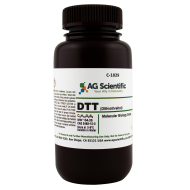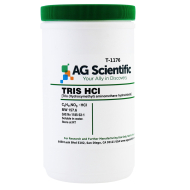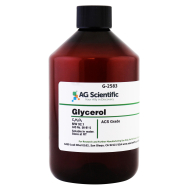Scientists and researchers turn to cloned DNA for various breakthrough studies as they provide multiple genetic copies and DNA segments suitable for wide-scale tests. In vitro mutagenesis is one useful application of cloned DNA, where researchers create a mutation in one segment of the target DNA. The cloned DNA is then transferred into a cell or organism and studied, which provides academics with a deeper understanding of biological processes. There are various ways to achieve in vitro mutagenesis, depending on the target mutation type and biological site. Researchers must screen multiple colonies via sequencing to ensure the final sequence matches the desired results.

Site-Directed Mutagenesis
Site-directed mutagenesis is the preferred method when creating mutations in target sites with an identified wild-type sequence and commonly applied in functional genomics. Researchers mostly use site-directed mutagenesis in synthesizing short DNA/RNA segments known as oligonucleotides, often found in lab testing and forensics. The process usually involves traditional PCR or inverse PRC-based methodologies and primer extension preparations. Primers used in the preparation include a desired change, such as substitutions or deletions.
Direct PCR methods work well to create small mutant regions, while inverse PCR primer extensions can help achieve a wider mutant region. Advanced site-directed mutagenesis may use customized (synthetic) double-stranded DNA (dsDNA), which simplifies the steps required in the process.
Additionally, dsDNA applications offer a range of advantages over limiting PCR methods, including a restriction-free (RF) cloning process that enables researchers to integrate mutations at any point in a vector sequence. Site-directed mutagenesis with dsDNA also allows researchers to incorporate new mutations with the rest of the wild-type sequence.
The process significantly reduces polymerase-caused errors commonly observed in traditional PCR preparations. Site-directed mutagenesis has advanced multiple scientific studies, such as research on the treatment of metabolic diseases like Galactosemia and the improvement of enzymatic properties in new-generation bioethanol from nongrain-cellulose sources.
Gene Disruption Mutagenesis
Gene disruption, also known as gene knockout, is an in vitro mutagenesis process that involves the insertion of DNA through recombination and deactivates genes, primarily for functional genomic studies. Researchers applied gene disruption in the mutagenesis of Campylobacter jejuni, a genus of bacteria responsible for gastroenteritis. Gene disruption has its advantages over random mutation, with the researcher having control over specific mutation processes while preserving other genes within the organism. Scientists innovated the gene disruption method in the gene replacement studies of Escherichia coli, using a temperature-sensitive replicon.
Scientists have focused gene knockout projects on the study of Drosophila melanogaster, the fruit fly. Drosophila melanogaster shares an estimated 75% of human disease genes, but most of its genes have remained physically undiagnosed. Gene disruption methods can assist scientists in trials and discoveries in individual genes’ functionalities through the targeted process of gene deletion.
Practical Uses of In Vitro Mutagenesis
In vitro mutagenesis is applied in various industries, including agriculture, pharmaceuticals, and medical research. For example, experts implemented in vitro mutagenesis to study and produce sugarcane crops tolerant to imazapyr pesticides. The plants and crops resulting from in vitro mutagenesis may contribute to solving or mitigate food problems in regions afflicted by pest infestations or pollution. The genetic viability of these modified organisms due to recombinant DNA, advances plant breeding and improvement programs with improved resistance against drought, extreme temperatures, and other common environmental stressors.In the medical field, in vitro mutagenesis can help healthcare providers enhance treatment outcomes through modified biocompatibility in patients, which improves their reaction to specialized drugs. Biocompatibility supports wound management and reduces the risks of injuries, toxicity, and other adverse reactions during patient recovery.
Common Reagents for In Vitro Mutagenesis
In vitro mutagenesis processes involve cloned mutations upon a plasmid. The procedure includes pre-arranged function selections and multiple screenings to improve the accuracy of results. In vitro mutagenesis research uses a wide range of reagents depending on the targeted gene, size of mutant regions, and varying chemical properties. Common reagents include glycerol, EDTA solutions, DTT, BSA, and Tris HCl.Glycerol
Glycerol is a polyol compound that appears as a colorless and odorless liquid. Researchers may apply glycerol to in vitro mutagenesis sample preparations to increase the density of products for improved layering.EDTA
EDTA is a chelating agent commonly applied in medical and industrial settings. Researchers may use EDTA to in vitro mutagenesis toward reducing contamination from toxic metals.DTT [dithiothreitiol]
Dithiothreitol (DTT), also known as Cleland's Reagent, is a redox reagent suitable for small-molecule (PCR managed) in vitro mutagenesis. The reagent has the function of restoring enzymatic activity lost from oxidization.Bovine Serum Albumin
BSA is a high purity albumin protein used in the culture of mammalian cells. Researchers may apply BSA to estimate protein concentration within in vitro mutagenesis while minimizing chemical reaction to measured proteins. BSA provides scientists with improved assay sensitivities that result in accurate research outcomes.Tris Hydrochloride
Tris HCl is a high purity biological buffer commonly applied in laboratory settings, which provides researchers with samples that exhibit constant pH levels. Scientists may add Tris Hydrochloride to applications involving protein electrophoresis to analyze PCR results during in vitro mutagenesis.Superior Quality Research Components
AG Scientific is a trusted supplier of quality scientific components for academic and research purposes. We stock a diverse range of reagents suitable for various in vitro mutagenesis preparations!Additional Reading
- Sources of DNA & RNA Contamination in the Laboratory
- 6 Reasons to Initiate Change Control with Manufacturers
- Nanopore Electrochemistry: Single-Molecule Sensors





